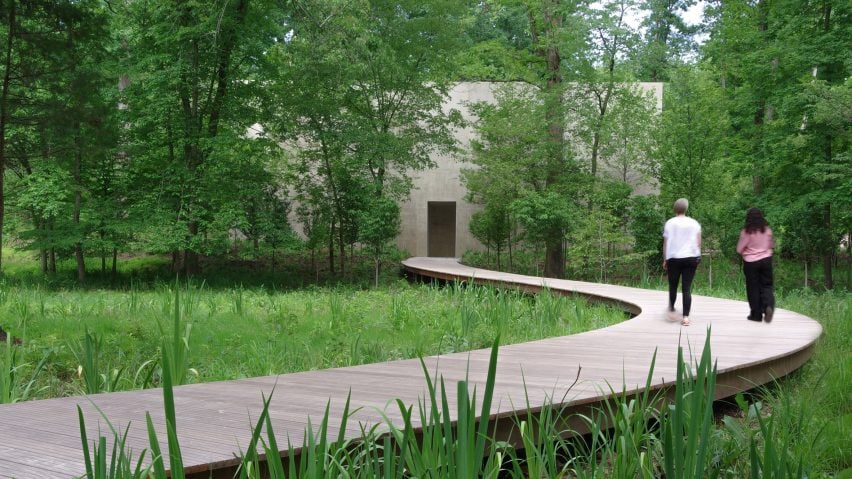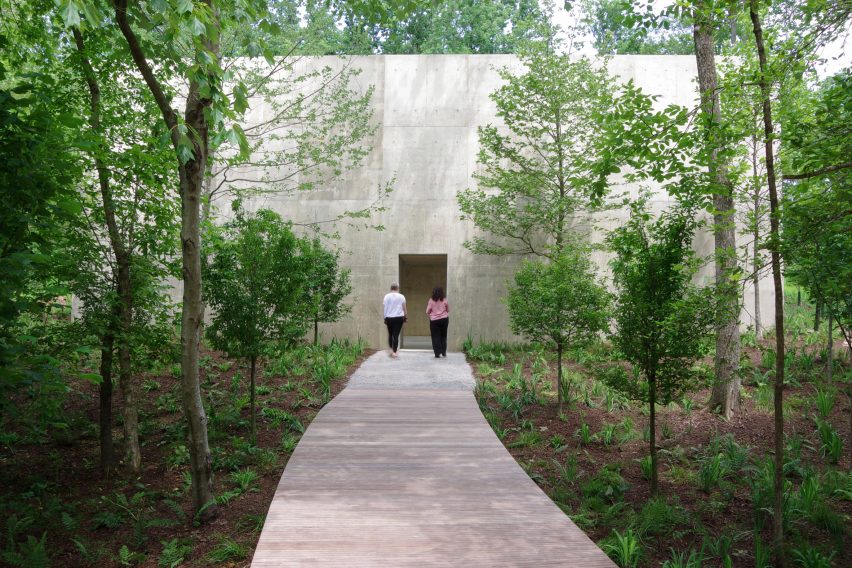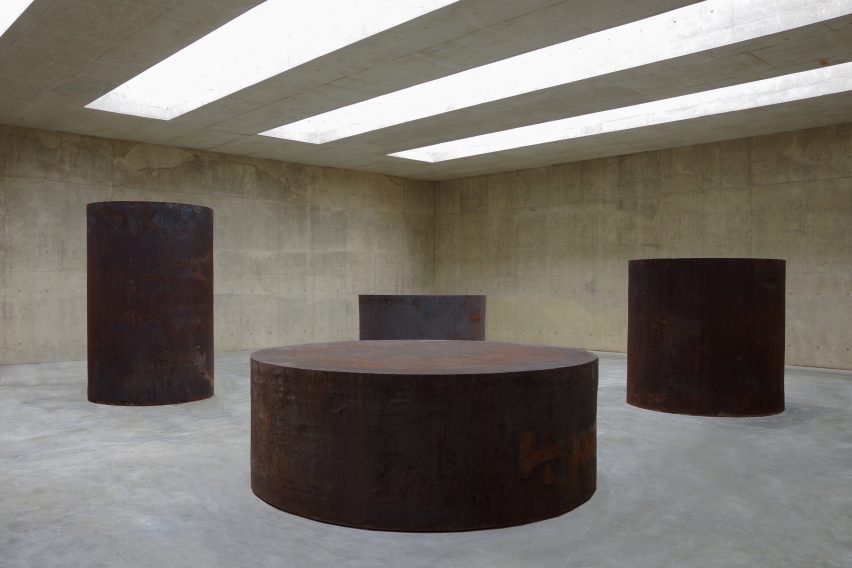
Thomas Phifer creates monolithic concrete gallery as home for Richard Serra artwork
American architecture studio Thomas Phifer and Partners has built a concrete structure at the Glenstone Museum in Maryland to house an artwork by sculptor Richard Serra.
Thomas Phifer and Partners designed the 4,096-square-foot (281-square-metre) concrete structure specifically to house a work by Serra, who gave input into the design of the structure.
The building houses four cylindrical steel sculptures called Four Rounds: Equal Weight, Unequal Measure, which was created in 2017.
To hold the artwork, the studio created a rectilinear block made completely of cast-in-place structural concrete with skylights and doors made of stainless steel.

After concurring with the artist, the architecture studio decided that the building would have no electric lights. All the light illuminating the sculptures within is generated by a series of skylights.
The ceiling was made from clear span concrete and is supported by concrete beams that form the light wells capped by the white glass skylights framed in aluminium.
In order to support the massive metal sculptures within, Thomas Phifer and Partners made the concrete flooring four feet thick (1.2 metres).
"Together, we were able to consider every detail of how the volume of the space interacts with the masses within, how the different qualities of light filtering down animate the surfaces of the sculpture, how the texture of the building's concrete enters into dialogue with Serra's steel," said Thomas Phifer and Partners.

Phifer wanted the space to be a place for quiet contemplation for visitors, who enter the gallery space via a winding wooden walkway that is elevated over wetlands.
The structure is sited on the eastern edge of the property at the base of a slope so that the back of the gallery is buried 15 feet (4.5 metres) into the hillside.
At the base of the building, soil embankments were filled back in around the structure which gives it the appearance of something embedded into the landscape for years, a unity of sculptural form and geography that can be seen in much of Serra's work.
In fact, the museum wanted the structure to more than just house the works, but become part of the installation itself.
"The building they designed is more than a container for the sculpture; it's an integral part of the experience," said Glenstone director Emily Wei Rales.
Serra was born in San Francisco in 1938 and is known for his large, abstract sculptures. His work is considered land art for its size and incorporation of the topography of sites into the sculptures. Due to the size of the works and his use of steel, Serra's work often takes on architectural qualities.
The Glenstone Museum is in Potomac, Maryland and has a number of galleries with outdoor sculptures including a number of other works by Serra.
In 2018, the museum opened The Pavilions, a massive expansion of the original facilities also designed by Thomas Phifer and Partners. It is made of stacked-concrete blocks with floor-to-ceiling glass windows oriented around a marshy central pond.
Other architectural projects that have been built exclusively to host the artworks of Serra include a charred-timber pavilion designed by architecture studio OLI in Winchester, New York.
Project credits:
Architect: Thomas Phifer and Partners, Thomas Phifer, Michael Trudeau, Rebecca Garnett
Landscape architect: PWP Landscape Architecture, Adam Greenspan, Conard Lindgren, Marta Gual
Structural engineer: Structural Engineer: Skidmore, Owings, and Merrill, LLP
Geotechnical engineer: Schnabel Engineering DC
MEP engineers: Mueller Associates
Lighting/daylighting: Arup
Civil engineer: Vika
Irrigation: Sweeney Associates